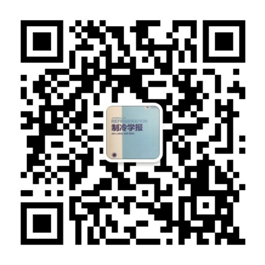We are committed to publishing high quality new work that makes a significant contribution within the scope of our journal. In order to meet this aim, Journal of Refrigeration implements three review system. It can be officially published after three review for all manuscripts.The review cycle is about 30 days.
1. Review process
1) First review
Executive editor is responsible for the initial review of the manuscript. Using network tools such as AMLC of CNKI and Wanfang Data for academic misconduct detection, if the repetition rate of the manuscript is less than 10%, meets the submission requirements of the journal, and the structure is appropriate, the expression is clear, and the overall quality of the article is good, it will be classified by discipline and submitted to peer experts for review. Rapidly reject papers with a coincidence rate exceeding 20%. For manuscripts with a coincidence rate of 10%-20%, such as literature review manuscripts and suspected self copying manuscripts, they can be handled by the executive editor. For manuscripts with an overlap rate involving innovative points, they need to be reviewed by experts before being determined. A manuscript may be returned to the author(s) without external review if, in the opinion of the editor(s), one or more of the following apply:
The work clearly falls outside the scope of the journal.
The work is of poor scientific quality such that it is clearly not suitable for publication in a scientific journal.
The manuscript contains redundant information or large amounts of material that has already been published elsewhere or is under consideration by another journal.
The quality of the Chinese in the manuscript is too poor to present the science clearly.
2) Single-blind review by two peer experts
After passing initial review process, manuscripts will be forwarded to reviewers for further consideration. Peer experts review the manuscript for its academic value, data authenticity, scientific rigor of structure, etc. and provide specific written comments on the acceptance, rejection or revision of the manuscript. Manuscripts signed by experts that are not accepted shall not be adopted and submitted to the editor-in-chief for final review.
3)Final review
Final review of first-reviewed and peer-reviewed manuscripts by the editor-in-chief. The editor-in-chief strictly controls the manuscript structure and overall quality. The final reviewer has the right to reject the manuscripts that have passed the first review and peer review but do not meet the above requirements.
2. Dispute Resolution Procedure
The author has the right to dispute any decision made in the article at any review stage; Disputes will be decided and replied to by the editorial department of the Journal of Refrigeration based on the opinions of the solicitors or editorial board, and the author will be notified of the final opinion on whether the article is suitable for publication. Specific steps:
Step 1: The author sends a rebuttal letter to the editor. Clearly explain why you do not agree with the editorial department's decision on the article and should include a detailed response to the reviewer's comments.
Step 2: All appeal requests received by the editor will be processed based on the specific situation and a final decision will be made.
Step 3: The article will be further evaluated by independent reviewers.
Step 4: The editor will notify the author of the final decision on the article.
3. Accepted manuscripts
All accepted manuscripts will be edited and proofread as soon as possible, and published on our official website and CNKI and other database websites.
4. Correction and Withdrawal of Manuscripts
When a published article needs to be corrected or withdrawn, follow the guidelines of the Publishing Ethics Committee (COPE).
If the following situations occur, corrections will be issued:
There are issues with the scientific and accurate content of the article
Part of the article is misleading
The author/author information is incorrect (i.e. missing the author or adding an author who did not perform actual work).
If the following situations occur, a withdrawal notice will be issued:
There is clear evidence that the conclusion of the article is unreliable or there are other errors
The article has been published elsewhere without appropriate and reasonable citations (i.e. repeated publications)
The article constitutes academic misconduct such as plagiarism.

